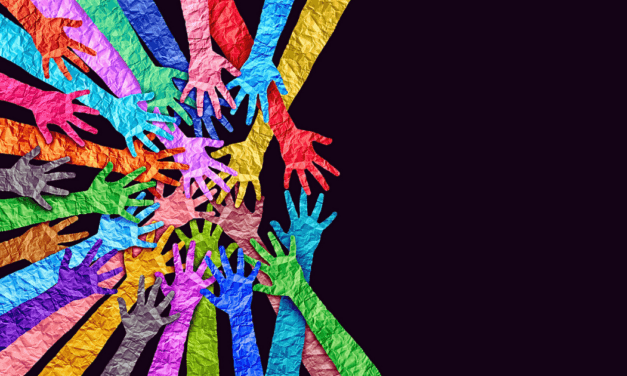This review first appeared in the Christian Research Journal, July-August (1997). For further information or to subscribe to the Christian Research Journal go to: http://www.equip.org/christian-research-journal/
Diana Eck is Professor of Comparative Religion and Indian Studies at Harvard University. She is one of the most eminent scholars in the West on Far Eastern religions. I received invaluable insights about Hinduism from her classes in the early eighties. On the dust jacket of The Good Heart (a collection of the Dalai Lama’s sayings taken from a recent appearance before Western admirers), she writes, “This is the record of an extraordinary and historic interfaith encounter. To hear the Dalai Lama reflecting on the Gospels is exciting, refreshing, and illumining, reminding those of us who are Christians that this is a living Word.”
Deserved Deference? I find her statement interesting for two reasons. First, Eck identifies herself as a Christian. I still vividly recall her declaring herself a Hindu on a number of occasions in her classroom. I don’t believe she converted to Christianity in the past 15 years. Instead, I believe she has always regarded herself as a Christian, but also views herself as a Hindu. For her it is not either/or; it is possible to embrace both traditions sincerely and zealously without betraying the basic principles of either one.
Second, she praises the Dalai Lama’s understanding of Jesus’ teaching. Although the Dalai Lama admitted he was not familiar with the Holy Scriptures and added that this was his first opportunity to comment on them (p. 42), Eck regarded his commentary as authoritative and uniquely insightful. The homage she pays the living symbol of Tibetan Buddhism is similar to the deference he received at the event, which produced the material for The Good Heart.
A Forced Agenda. Each year the John Main Seminar is held at the Middlesex University in London, England. The World Community for Christian Meditation sponsors this event in memory of John Main, a Benedictine monk who established Christian meditation centers throughout the world. The sponsors invited the Dalai Lama to be their guest speaker in 1994. At this event, entitled “The Good Heart,” they presented him with eight passages from the Gospels, including the Sermon on the Mount, the Transfiguration, and the Resurrection. The Bible translation was the New English Bible (University of Oxford Press, 1970).
Three hundred and fifty people attended. They were mostly English-speaking Westerners who professed to be Christians. The remarks of some reveal a shared belief that they are more enlightened than other Christians. For instance, one of the attendees, Lady Maureen Allan, stated, “One thing I think we have all appreciated so very much in the discussion today is how Your Holiness is an embodiment of happiness. It is a great blessing for Christians who grew up with a legacy of being miserable sinners! . . . In Western Christianity, there is a difficulty in defining . . . God. I don’t think that the people in this room any longer have a picture of an old man high up with a long white beard, though I’m afraid this is probably quite current in parts of the world” (101-2).
Lady Allan’s statement strengthens the impression that the doctrinal views of those who attended the seminar and professed to be Christians represent true Christianity. This assumption is intended not only for the readers of The Good Heart, but also for the Dalai Lama, who frequently asked attendees what Jesus says about this or what Christianity says about that. This particular perspective takes on further significance when one realizes that the majority of the content of The Good Heart is not what the Dalai Lama says but what others say to him about Christ and His teachings.
Clearly one of the most important views that the Dalai Lama’s audience wanted to convey is that unity is possible between the Christian and Buddhist traditions. In the same way that Professor Eck blurs the line between Christianity and Hinduism, one senses that these participants would love to see the fixed boundaries between Christianity and Buddhism vanish.
The Dalai Lama is a persuasive teacher who commands a comprehensive understanding of the major philosophies within Buddhism and the subtleties of their doctrines. Furthermore, he is honest and gracious when he relates Buddhism to Christianity. Although he recognizes areas where followers of these two religions can benefit from each other, ultimately the teachings of the Buddha and Christ are not compatible. In fact, he said,
To sum up all that we’ve discussed, I feel there is tremendous convergence and a potential for mutual enrichment through dialogue between the Buddhist and Christian traditions, especially in the areas of ethics and spiritual practice, such as the practices of compassion, love, meditation, and the enhancement of tolerance. And I feel that this dialogue could go very far and reach a deep level of understanding.
But when it comes to a philosophical or metaphysical dialogue I feel that we must part company. The entire Buddhist worldview is based on a philosophical standpoint in which the central thought is the principle of interdependence, how all things and events come into being purely as a result of interactions between causes and conditions. Within that philosophical worldview it is almost impossible to have any room for an atemporal, eternal, absolute truth. Nor is it possible to accommodate the concept of a divine Creation. Similarly, for a Christian whose entire metaphysical worldview is based on a belief in the Creation and a divine Creator, the idea that all things and events arise out of mere interaction between causes and conditions has no place within that worldview. So in the realm of metaphysics it becomes problematic at a certain point, and the two traditions must diverge (81-82).
Although the Dalai Lama said, “The conceptions of God and Creation are a point of departure between Buddhists and Christians” (55), he was not critical of these Christian doctrines. Instead, he encouraged Christians to respect and cultivate their own religious tradition and not to doubt Christ. “The last thing I wish to do,” he said, “is to plant seeds of doubt and skepticism in their minds” (45).
He did not want to convert his listeners to his religion. “If you are Christian,” he said, “it is better to develop spiritually within your religion and be a genuine, good Christian. If you are a Buddhist, be a genuine Buddhist” (46). Although the Dalai Lama saw similarities in ethics between the two religions, as a Buddhist he could not accept a Creator God and a personal Savior. Therefore, he insisted that there is no such thing as a Buddhist Christian. In illustrating this impossibility, he quoted a Tibetan expression, which says, “Don’t try to put a yak’s head on a sheep’s body” (105).
Despite the Dalai Lama’s repeated contention that the teachings of the Buddha and Christ ultimately point to very different doctrines about God and salvation, his listeners insisted on interpreting his statements as being in perfect harmony with their own view of Christ and His teachings. In fact, Father Laurence Freeman, director of the World Community for Christian Meditation and moderator of the seminar, said to the Dalai Lama in the middle of the seminar, “Thank you very much, Your Holiness. The more clearly you define the subtle differences in our religious traditions, the more I feel a kind of unity” (75).
While dialogue and respect between Buddhists and Christians is commendable, we, like the Dalai Lama, should recognize the significant doctrinal differences. Yet the sponsors of “The Good Heart” seminar seem to have ignored those differences and clung to their own agenda for the seminar. “The videos of the Good Heart Seminar,” said Father Laurence, “have already shown how the dialogue that commenced there can and has been continued. Groups of Buddhists and Christians meet, meditate, view part of a video, and then discuss it. We hope this book will take this dialogue even further” (131). Further to what? The answer becomes clear when we examine the doctrinal statements of those who attended the seminar.
A Forced Interpretation. At the Good Heart Seminar a particular gospel passage was first read, then the Dalai Lama related the passage to a Buddhist scripture or teaching, and then he briefly expounded on the doctrine, such as detachment or rebirth, from a Buddhist perspective. For example, when the discussion was on Mark 3:31-35, the Dalai Lama keyed on Jesus’ statement that the people are his brothers and sisters. He interpreted Jesus’ words of detachment from his mother and brothers as similar to the Buddhist doctrine of detachment from all things in order to be truly compassionate toward all things (67-70).
His explanation of the passage neglects its context and a critical examination of Jesus’ words. Of course, the sponsors did not intend for the Dalai Lama to provide an exegesis of any of the passages. In fact, the Dalai Lama himself said, “What I had to say was quite ‘sketchy’ and rather extemporaneous” (129).
Yet in an attempt to speak to the spiritual situation of his audience, it is not surprising that the Dalai Lama would interpret Jesus’ statement, “Whoever obeys the will of God are my brothers and sisters and mother,” to “imply that all those who share the divine nature who have the capacity or potential to follow the will of God, are also my mother and brothers and sisters. This would include or embrace the whole of humanity and underline the unity and equality of all human beings” (69).
The Dalai Lama’s listeners seize on such statements and attach them to their own world view of the unity of all beings — a belief that is far different from either Christian orthodoxy or the fundamental teachings of Buddhism, which assert that the human soul is illusory and attachment to the divine creates suffering. “We know that you represent a rich and wonderful Buddhist tradition,” said Laurence, “which has refined the instrument of the mind for the perception of truth. And so we feel eager to read our Holy Scriptures through your mind, and, with you, to see them in a fresh way” (36). Actually, they want the Dalai Lama to affirm how they interpret the Bible, and when he falls short they articulate their own beliefs after the Dalai Lama’s comments. In fact, Father Laurence includes his own commentary on each of the Gospel passages in The Good Heart. He presents his commentary as a Christian, but his statements do not accurately represent such a perspective. He comments, for example, that
the earliest traditions did not speak of Jesus as God. That was a later development. But Saint John speaks of the intimate relation between Jesus and God. Jesus stood in a unique relation to God as Son to Father. . . . Over the centuries, Christian thinkers developed the doctrine of the Trinity to describe this relationship that saves, transforms, and completes. . . . [Jesus’] uniqueness does not exclude other revelations of the Truth, but Christian belief would see Jesus as the full self-revelation of God in human form. This also manifests the true nature of humanity, its full self-revelation in the divine formlessness as well as its fullest capacity for life, consciousness, and union with God. . . . The Resurrection is also important, however, because it shows that the greatest human fear, of death, is based on illusion. Death is not the end of life but the final entry into fullness of life, which is sharing in the being of God (145, 148).
When the Dalai Lama asked his listeners to define various Christian terms for him, they provided unorthodox answers. For instance, he asked Father Laurence to explain the Christian understanding of heaven. Laurence said, “Heaven is the experience of sharing the joy, the peace, and the love of God to the fullness of human capacity.” The Dalai Lama then asked, “So there is not necessarily an association with a physical space?” Laurence answered, “No. Only in dreams.” “Similarly can one by extension understand the notion of hell also in terms of a very negative, deluded state of mind?” asked the Dalai Lama. “Yes, certainly,” Laurence replied. “So that means that we need not think of heaven and hell in terms of an external environment?” he continued to ask. “No,” Laurence returned, “Hell would be the experience of separation from God, which in itself is unreal. It is illusory because nothing can be separated from God. However, if we think we are separated from God, then we are in hell” (114-15).
While the people who participated in the discussions at the seminar expressed deep admiration for the Dalai Lama’s insight into the Gospel passages, it is evident that he had to lean heavily on their interpretation of Scripture. Thus his treatment of Christ’s teaching is not so much an “enlightening” Buddhist perspective on the Gospels, as Professor Eck stated, as it is a Buddhist interpretation of the participants’ attempt to harmonize disparate concepts in Buddhism and Christianity.
Genuine Respect. Should the Dalai Lama command our deference because of his discourse at the John Main Seminar, as presented in The Good Heart? I believe not. Yet I believe he is a man of remarkable intelligence and compassion.
The Dalai Lama was asked what question he would ask if he met Jesus. He said, “For me, as a Buddhist, my attitude toward Jesus Christ is that he was either a fully enlightened being or a bodhisattva [a being who aids others to enlightenment] of a very high spiritual realization. . . . The first question I would ask is, ‘Could you describe the nature of the Father?’ ” (83).
Many Westerners have flocked to the Dalai Lama to pay their respect to him. Some of them are religious and have offered their own description of God the Father. Wouldn’t it be wonderful if we tried to engage in a dialogue with him, and while we were courteous to him, he asked us this question?
—Reviewed by J. Isamu Yamamoto
J. Isamu Yamamoto is the author of Buddhism, Taoism, and Other Far Eastern Religions (Zondervan, 1997) and is a contributing editor to the Christian Research Journal.








